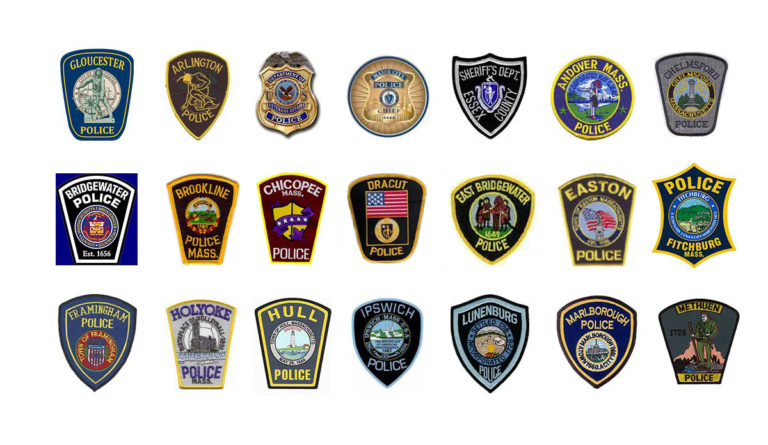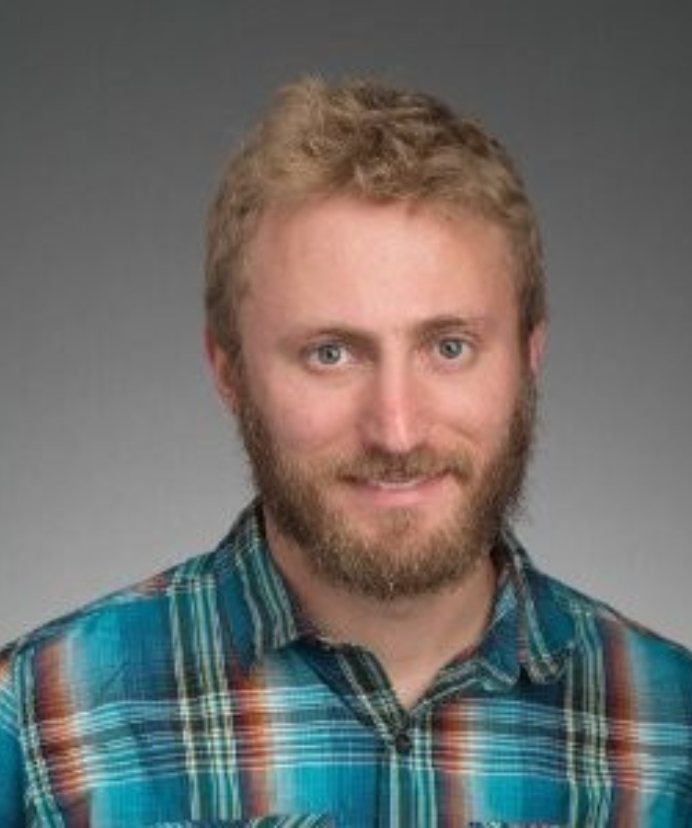A New Approach to Addiction
Facing a dramatic upswing in overdoses and deaths related to heroin and prescription opioid painkillers, the Arlington Police Department hired a public health clinician to help create treatment and care plans for at-risk individuals.

Read Time: 11 minutes
Published:
About two years ago, Chief Fred Ryan of the Arlington, Massachusetts police force had a realization. His community, a thickly settled residential town of about 43,000 people just northwest of Boston, was facing the consequences of a trend that has swept across the northeast and much of the rest of country: a dramatic upswing in overdoses and deaths related to heroin and prescription opioid painkillers.
Ryan’s realization came at a meeting with his staff in early 2015, a time during which an average of two people were dying every day from overdoses in Massachusetts. His team was going over a report by police crime analysts that included a database containing over 100 names of people in the community who had received attention from the police or other emergency services for a heroin overdose.
“It dawned on us that we didn’t know what we knew,” Ryan says. “We had, in our database, a lengthy list of people who had previously overdosed and who were likely to be our next overdoses. And what were we doing to get these people services? Nothing. Their names were sitting in a database.”
Realizing the potential wealth of information at their disposal, Ryan and his team set about rethinking the way the police would address their community’s heroin crisis. Rather than, as Ryan puts it, trying to “arrest their way out of the problem,” the department would take a new approach: reaching out to the families and loved ones of people struggling with addiction and working with them to develop plans to manage the risk of a potential overdose.
“We had, in our database, a lengthy list of people who had previously overdosed and who were likely to be our next overdoses.
Launching a program that would become known as the Arlington Outreach Initiative, the department hired a public health clinician to help create treatment and care plans for the individuals in their database of at-risk people. The police began reaching out to the families of these people, as well as individuals identified as buyers during investigations of local dealers. They offered resources including supplies of nasal NARCAN, which can revive someone in the event of an overdose, and information about how to help their loved ones enter treatment. The department began holding public meetings to provide families with NARCAN training and treatment information.
Although the Initiative is still in its early days, Ryan believes it has been an initial success, noting an anecdotal reduction of overdose deaths in his community. He also believes that the program can create a new sense of trust between the police and the community they serve while reducing the criminal stigma too often associated with addiction.
“As a law enforcement officer I’ll never say that enforcement doesn’t play some part,” he says. “But I think it’s about proportion. If we shift some of those resources that we have dedicated to enforcement toward treatment and prevention, we’ll begin to see a decline in overdoses and overdose deaths. I’m absolutely convinced this epidemic has to be broken down community by community and then neighborhood by neighborhood. That’s where meaningful change can occur.”
Arlington and Gloucester’s programs have become the basic models for police departments across the country to change the way they deal with addiction in their communities.
To help get the program off the ground, the Arlington Police also partnered with a newly founded organization, the Police Assisted Addiction Recovery Initiative, or PAARI.
PAARI’s own story began around the same time as Chief Ryan’s realization, in another Northeastern Massachusetts community. Gloucester, a fishing town and popular vacation destination about 40 minutes east of Arlington, had a similarly out-of-control problem with opioid dependence. In May of 2015, as Arlington was preparing its program, Gloucester was making national headlines with its own program, the ANGEL Initiative.
Although the Gloucester program provided some inspiration for the Arlington model, it differs in several key ways. Where Arlington’s initiative relies on outreach to addicts and their families, the Gloucester Police encourage people struggling with addiction to come to them. The ANGEL initiative promises that anyone who comes to the Gloucester police station asking for help with their addiction will not be arrested. They are encouraged to turn over their drugs and paraphernalia and are then taken to a nearby hospital, where they are paired with a volunteer that helps walk them through the process of entering treatment. Also, as part of the initiative, the police made sure that nasal NARCAN was made available at all pharmacies without a prescription.
Word of the initiative spread quickly in the media, among other police departments, and even among addicts themselves. Soon Gloucester’s outspoken police chief Leonard Campanello joined with a local Boston developer and activist Jon Rosenthal to form PAARI to help other police forces adopt similar models (Campanello recently stepped away from the organization amid an investigation of unrelated accusations of misconduct.) With a grant of $5,000 dollars from PAARI, Arlington became the new organization’s first partner outside of Gloucester.
Arlington and Gloucester’s programs have become the basic models for police departments across the country to change the way they deal with addiction in their communities. When a new police partner approaches the organization, PAARI helps them identify which model will best serve the needs of their community.
Although each PAARI-affiliated police department’s approach is different, they all share a set of common elements: they all encourage opioid drug users to seek treatment, distribute and educate the public about lifesaving drugs like NARCAN, and connect users with treatment facilities rather than arresting them for possession. While the methods differ, the goal is always the same: to achieve a reduction in overdose death in local communities.
To ensure that patients have adequate access to care after they come to their local police for help, PAARI also maintains a list of treatment providers where departments can send the addicts and families who come to them for help. At a minimum, these providers must offer 24/7 intake and provide scholarships to patients whose insurance will not cover the cost of treatment.
Since the summer of 2015, PAARI’s ranks have swelled exponentially. Today, over 200 police departments in 28 states have partnered with the group, while others have adopted similar programs independently. Recently, the Michigan State Police became PAARI’s first state police partner.
All of this has been accomplished with very little direct outreach on PAARI’s part. The word has primarily been spreading from, in the words of Allie Hunter McDade, the organization’s executive director “chief to chief or law enforcement agency to law enforcement agency.”
“Usually what I see happen is that there will be one or two police departments that adopt it in their area,” she says. “Then as their neighboring departments learn about it, it tends to grow in pockets that way.”
“Once you are arrested in this country [for drug possession], you go down a rabbit hole from which you never recover…”
While PAARI’s most recognizable mission is to help police departments develop strategies for dealing with addiction in their communities based on the Arlington and Gloucester models, the organization is also interested in bringing about more systemic changes in the way we handle and treat addiction. David Rosenbloom, a professor at the Boston University School of Public Health and a member of PAARI’s Executive board, sees programs like these as the first step in repairing a system that has been fundamentally broken for decades.
“Once you are arrested in this country [for drug possession], you go down a rabbit hole from which you never recover,” he says. “If you have a conviction on your record for being a drug addict… in most states you can’t get a job, you can’t live in public housing, you can’t get a federally funded loan or scholarship. And the criminal justice system doesn’t do anything to help you with your addiction. So, you are now sick and basically prohibited from being a citizen.”
PAARI programs are not the first instance of the justice system trying to help those arrested solely for drug possession avoid serious long-term consequences. Drug courts in many states offer alternatives to jail time and criminal records. However, they often require strict drug-testing regimens and punish participants for expressing the symptoms of their disease.
“The disease of addiction is one of relapse,” says Rosenbloom. “If you relapse in drug court you are often found in violation of your probation and sent back to jail.”
Rosenbloom believes Gloucester, Arlington, and other PAARI programs have solved a fundamental problem in addiction treatment by essentially eliminating this threat of punishment for those who are seeking help. Rather than making criminals out of addicts, local police become a gateway to treatment. This is a radical idea that flies in the face of years of criminal policy that has sought to discourage drug use with the threat of punitive measures and – while Rosenbloom says the reception has been overwhelmingly positive – it has been met with some resistance. A number of district attorneys have questioned the polices’ authority to decide who will and won’t be prosecuted for committing a crime, including the DA of Gloucester’s own county.
Also, the problems Rosenbloom sees with the system do not stop at the police station. In many cases, he says the treatment system has also failed addicts seeking help.
“PAARI has promoted federal and state requirements that individuals with opioid disorders be provided with evidence-based, medication-assisted treatment at every place that calls itself a treatment provider,” he says. “Up until recently, the federal government has promoted the use of medication based treatment. But providing it and making sure that it’s actually available are two very different things.”
To this end, PAARI has organized a council of police chiefs to draft the organization’s public policy priorities and organize lobbying efforts. Arlington’s Chief Ryan has testified before Congress to promote the group’s model of steering addicts toward treatment rather than prison. However, the group’s most formidable policy challenge may be on the horizon, as questions about the future of the ACA continue to mount. In January, the police council sent a letter, signed by over 100 law enforcement officers from PAARI affiliated police forces, emphasizing the importance that any changes to national healthcare policy not create any new barriers to treatment for those struggling with opioid addiction. According to Rosenbloom, one of the key battles for the continuing success of PAARI programs will be over the ACA’s Medicaid expansion provisions.
“In many states the expansion of Medicaid made evidence-based treatment available for the first time,” he says. “Because many of the people who have addictive disorders are men between the ages of 25 and 44 who are unemployed and without insurance – now they have access to addiction treatment. We don’t know what will happen to that…. Which is why cops find themselves in the strange position of having to write their senators about healthcare policy.”
Why, when the police have so long been tasked with arresting and incarcerating people suffering from addiction, would they turn out to be such effective outreach workers?
In December of last year, the first peer-reviewed research about the success of a PAARI sponsored program was published in the New England Journal of Medicine, in the form of a letter to the editor signed by researchers from BU School of Public Health and Boston Medical, including David Rosenbloom.
Looking at the original program in Gloucester, the researchers found some encouraging statistics. During the program’s first year, 376 people sought help for their opiate addiction at the Gloucester Police Station. In 12 of these cases, the individuals were unable to enter treatment because of inadequate insurance or other circumstances. However, of those who were eligible, 94.5% were placed directly into treatment, a high figure influenced in part by the fact that Massachusetts’ state-mandated insurance covers detoxification. According to the study, this successful placement rate outpaced that of similar, hospital-based intake programs.
However, the question remains: why, when the police have so long been tasked with arresting and incarcerating people suffering from addiction, would they turn out to be such effective outreach workers? This is certainly a question that will need to be considered in future research, but Rosenbloom has some ideas of possible answers.
“Most of these people have had very unhappy, to say the least, experiences with cops,” he says. “And yet, they’re walking into police stations asking for help. In studying the Gloucester program, we asked ‘why are you doing this?’ The answers we got, very steadily, were: This is the first place where I was treated without being judged.”
Feature image: Our Partners: Badges from Massachusetts law enforcement agencies who have joined PAARI – The Police Assisted Addiction and Recovery Initiative, by “lending their voice to the cause and/or by creating their own addiction programs.”



